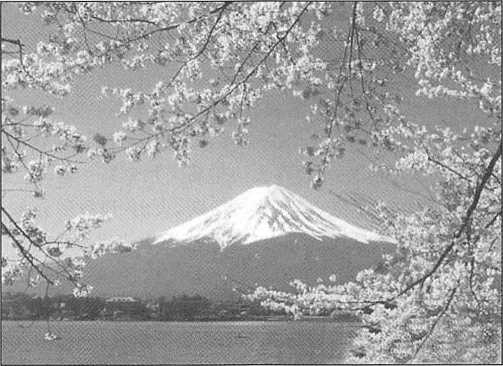volcanoes can be divided into conical , shield and composite volcanoes according to their appearance.
A conical volcano consisting mainly of pyroclastic rocks. When volcanic ejectors are dominated by pyroclastic material, they will accumulate around the crater and form cones. It is also called pyroclastic cone or cinders, because it is formed by pyroclastic accumulation. Due to the loose intersection of pyroclastic material, it is impossible to form a higher accumulation.

Figure 3-3 Vista of Mount Fuji
Mount Fuji in Japan is a standard conical volcano. Mount Fuji means "volcano" in Japanese. Mount Fuji is 3776 m above sea level with an area of 90.76 km2. Mount Fuji has erupted 18 times since records began, it is a relatively young dormant volcano, the last major eruption was in 1707 (figure 3-3,3-4).

Figure 3-4 Conical volcano Mount Fuji
Shield volcano is a large volcano with a broad top and gentle slope flanks (shield). It is composed of lava flows, with a wide and flat appearance and large bottom. Only lower viscous lava flows can form shield volcanoes. Therefore, most of these volcanoes are basaltic and occur in the ocean, the most famous one is Kilauea volcano in the Hawaiian islands (figure 3-5).

Figure 3-5 Kilauea volcano, Hawaii
Composite volcanoes, also known as stratified volcanoes are formed by repeated eruptions, their recurrence cycles can be hundreds of thousands of years or hundreds of years. The highest volcano on earth is stratified volcano -Nevado OjosdelSalado in Chile, with a height of 6887m. This type of volcanic lava interbedded with fragments, viscosity is higher than the former,many mountains belong to this category, which often become the scenic spots due to the beautiful appearance, such as the Italian Mount Vesuvius.
Comment list ( 0 )
